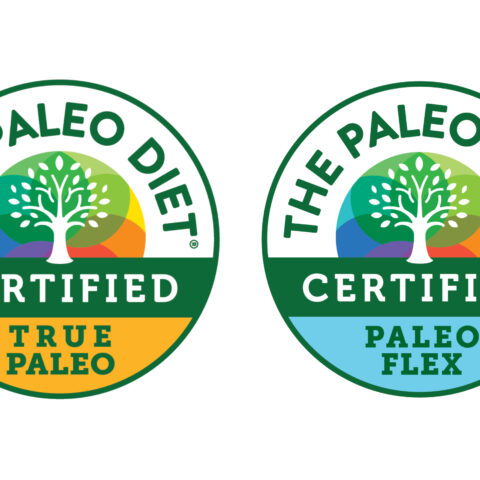How to Spot Pseudoscience in Health and Nutrition Trends

What You’ll Learn
From misleading buzzwords to cherry-picked studies, pseudoscience is creeping into health and nutrition trends and marketing. In this article, you’ll learn some common red flags in nutrition marketing, differences between pseudoscientific language and objective evidence, how The Paleo Diet® is grounded in science, and tips for being a smarter consumer.
According to the International Food Information Council (IFIC), 59% of Americans say it’s hard to know which nutrition advice to trust, and 68% report seeing conflicting messages about what foods they should eat or avoid on social media alone.¹ With health claims flooding our feeds, nutrition marketing has become a place where pseudoscience often creeps in, leaving many of us confused about what, or who, to believe.
The Paleo Diet offers a science-informed option for those looking to improve health through nutrition. Grounded in decades of peer-reviewed research by founder Dr. Loren Cordain, The Paleo Diet is built on a foundation of evolutionary nutrition and clinical evidence. Foods certified under TRUEPALEO™ and PaleoFLEX™ reflect rigorous ingredient integrity, not trendy marketing.
Let’s explore how to spot pseudoscience in health and nutrition marketing and better understand what makes an evidence-informed diet truly trustworthy.
What Are Common Nutrition Pseudoscience Red Flags?
Nadine Clopton, Regenerative Education Program Manager at Rodale Institute, says, “Pseudoscience in nutrition and agriculture often shows up as advice that sounds scientific but isn’t backed by real, credible research. It can look like diets or products that promise quick fixes, using buzzwords like “detox” without explaining what they really mean, or making bold claims without scientific backing.”
Other pseudoscientific marketing red flags to look for include:
- Anecdotes instead of peer-reviewed data
- Diets that promise a quick fix or apply to everyone
- An expert cited outside of their field
- Vague biology terms (like “balances hormones”) without backing
- Fear-based claims with no nuance
- Claims that can’t be measured or challenged
Is This Wellness or Just Well Marketed?
Dr. Mark J. Smith, Chief Science Officer at The Paleo Diet, says, “People love to say ‘evidence-based,’ when speaking about scientific backing, but the term is loaded.” While the term sounds trustworthy, it can be misleading if the “evidence” comes from weak studies, cherry-picked data, or is taken out of context. Just because something uses that phrase doesn’t mean it’s backed by strong or honest science.
Maggie Jaqua of WholeFoods Magazine also encourages consumers to check citations to make sure the research matches the product. She adds that the Council for Responsible Nutrition has helpful resources, especially for selecting supplements.
“Anecdotal testimonials can be compelling, but it’s important to make sure the claims comply with regulations and are backed by science,” says Jaqua.
And keep in mind that correlation doesn’t equal causation. It could be a coincidence or something else causing both. Real science looks deeper to find the true reason why something occurs. It is built on peer-reviewed studies and transparent methodology, with replicable results.
“If you can see that there are multiple studies saying the same thing, then that is fairly reliable,” Dr. Smith says. Pseudoscience makes vague claims that are hard to prove, resist change, and are murky and anecdote driven.
How Is The Paleo Diet Grounded in Science?
While many pseudoscientific trends push a one-size-fits-all plan or lack substantial science backing, The Paleo Diet offers a flexible, evidence-informed nutrition framework. It emphasizes eliminating inflammatory foods while prioritizing whole, nutrient-dense options that nourish the body.
The nutrition science behind The Paleo Diet is backed by decades of peer-reviewed research and data, while still allowing for flexibility. Because The Paleo Diet focuses on science-backed, thoughtfully produced foods, it embraces ingredients from every culture and region. After all, every culture has its superfoods, as Clopton points out.
“In Africa, for example, baobab fruit, moringa, and coconut are all exceptional nutritional powerhouses that are commonly consumed.”
This qualification extends to animal products too, requiring humane, pasture-based standards to meet the TRUEPALEO certification. This science-backed, culturally flexible approach makes The Paleo Diet a sustainable option for long-term health instead of a one-size-fits-all fad.
How Can You Be a More Aware Consumer?
According to IFIC, more than 60% of adults say marketing buzzwords influence their food choices,² even though most aren’t regulated or scientifically meaningful. Rather than obsessing over buzzwords or food labels, we should ask our own questions like:
- What is the nutritional value of this food?
- What do the portion sizes look like?
- How was this food grown or raised?
When we focus on only one aspect of eating, we miss out on the true meaning of nutrition for our overall health. Just like “low-fat” dominated in decades past, “plant-based” is now often presented as an inherently superior option, regardless of sourcing, processing, or nutritional value.
“While the idea behind eating more plants is a good one,” says Clopton, “it’s only truly beneficial when we consider which plants, how they’re grown, and how they’re processed. A real plant-based diet should celebrate biodiversity, nutrient density, seasonality, and farming practices that restore both people and the planet, not just swap meat for an ultra-processed plant patty.”
RELATED: What Are Ultra-Processed Foods?
Seek out quality products that are proud of their science backing, third-party certifications, and quality control measures when considering your food, nutrition, and health choices. They will have that information available and easy to find to build consumer trust, says Jaqua.
Another helpful tip to ensure quality is to buy from a trusted brick-and-mortar retailer. “Responsible natural products retailers have their own vetting process and set high standards that brands must reach in order to be sold in store,” adds Jaqua.
So the next time you see a health claim, dig into what supports it and consider how it could affect your health and wellness. Instead of taking a simplified story from a slogan, we should engage with the full story behind our food choices.
Trusting the Science Behind The Paleo Diet
We’re not wrong to feel like something’s broken with our food marketing systems. For too long we’ve been sold a version of health that profits companies more than it protects people, but The Paleo Diet isn’t about fear or hype. It’s about helping you make informed choices with food vetted by science and integrity.
Explore The Paleo Diet’s evidence-backed resources or start by learning more about TRUEPALEO and PaleoFLEX certification, which are designed to help you eat with confidence, clarity, and integrity.
References
- International Food Information Council. (2023). 2023 Food and Health Survey. https://foodinsight.org/wp-content/uploads/2023/05/IFIC-2023-Food-Health-Report.pdf
- International Food Information Council. (2022). 2022 Food and Health Survey. https://foodinsight.org/wp-content/uploads/2022/05/IFIC-2022-Food-and-Health-Survey-Report.pdf
Tiffany Nieslanik
Tiffany is a freelance writer covering health and wellness, parenting, lifestyle, and consumer technology. With a passion for research-backed storytelling and a personal interest in food as medicine, she brings a thoughtful approach to writing about wellness and nutrition.
More About The Author




